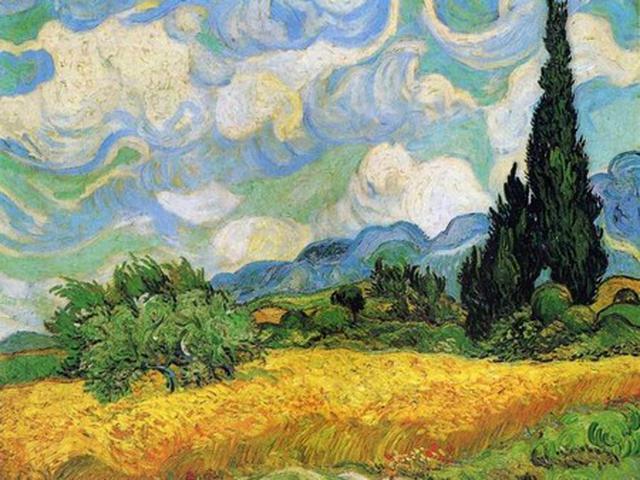Wheat field with cypress trees

Van Gogh had an impressionistic passion for landscape, which is evident in his wheat fields series. Although the wheat field with cypress trees is a highly turbulent work, it is classic and traditional in its conception.
The wheat field with cypress trees is well proportioned and balanced; Play with the opposition. The trees rising into the sky effectively contrast with the horizon. The brilliance of heaven and earth is achieved through Van Gogh's use of color and his play with light and shadow. Stormy emotions can be seen in the sky; Its forms move beyond natural representations to become stranger and more alien. The blue and greenish tones of the sky are reflected on the earth, creating a link between the two. Like the sky, the earth also projects wild energy, but its forms are truer representations of the natural world.
The duality between heaven and earth is important to the piece. The sky evokes the fantastic, while the earth is hard and firm, although equally intense. The cypress trees connect the two and create a union in the painting.
Vincent Willem van Gogh was a Dutch post-impressionist painter who is among the most famous and influential figures in the history of Western art. In just over a decade, he created nearly 2,100 works of art, including about 860 oil paintings, most of them in the last two years of his life. They include landscapes, still lifes, portraits and self-portraits, and are characterized by bold colors and dramatic, impulsive and expressive brushstrokes that contributed to the foundations of modern art. His suicide at age 37 followed years of mental illness and poverty.
Born into an upper-middle-class family, Van Gogh drew as a child and was serious, calm and thoughtful. As a young man he worked as an art dealer, often traveling, but became depressed after being transferred to London. He turned to religion and spent time as a Protestant missionary in southern Belgium. He was sidetracked by ill health and loneliness before beginning to paint in 1881, having moved home with his parents. His younger brother, Theo, supported him financially, and the two maintained a long letter correspondence.
© Tourblink